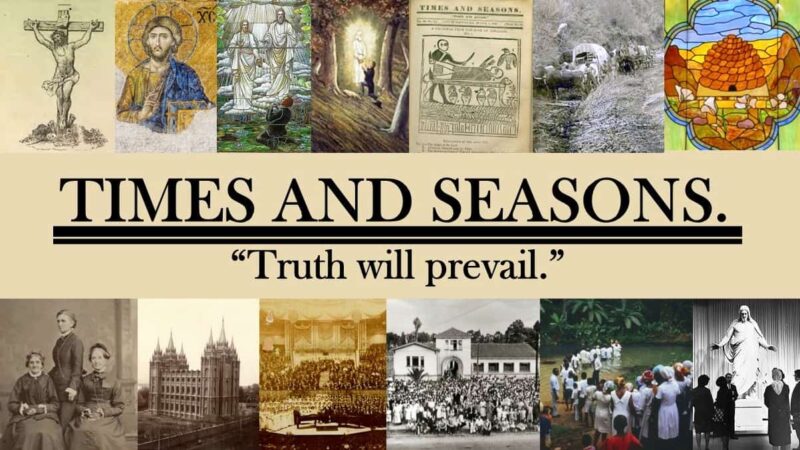-
•
•
9 responses

I only truly disagree with Jonathan on one point from his recent post about the new hymnal, and it’s probably not the part you would expect. Read More
-
•
•
7 responses

While we Latter-day Saints have our apologists and reason-based arguments for faith and defenses against attacks on the faith, those are, by our own admission, to help create a place for faith or respond to criticisms that attack that faith, we are careful to formally base our religious epistemology in the numinous, personal spiritual experience. In contrast, there is a line of thinking in some Christian circles that the resurrection’s eyewitness accounts are compelling enough to force any reasonable person to accept the reality of the resurrection based on sound historical evidence alone. I’ve heard these arguments a number of… Read More
-
•
•
4 responses

“Hearing the gospel in their own tongue” A January 2024 report on advances in AI and what they mean for the Church New Unicorn-startup-on-the-block Elevens Labs has rolled out a more refined dubbing/translation service. Now one can simply upload any video under 45 minutes long and hear it in one of 27 different languages in the voice of the speaker. (Somebody should “back translate” Elder Uchtdorf speaking in German back into English to see how close it gets). Word on the street is that it is pretty accurate. Implications for the Church: A lot of the more esoteric debates about… Read More
-
•
•
14 responses
Start practicing not hating the new hymn book now. Read More
-
•
•
2 responses
Interpreting the scriptures is a vital part of the Judeo-Christian tradition. In a recent interview at the Latter-day Saint history blog From the Desk, Joseph Spencer discussed a particular approach to interpreting the Bible—Biblical Theology. In particular, he focused on recent developments in Latter-day Saint Biblical Theology. What follows here is a co-post to the full interview. Read More
-
•
•
2 responses

Latter-day Saint Perspectives on Atonement is a fascinating journey through the scriptures and teachings of The Church of Jesus Christ of Latter-day Saints about the Atonement of Jesus Christ. Read More
-
•
•
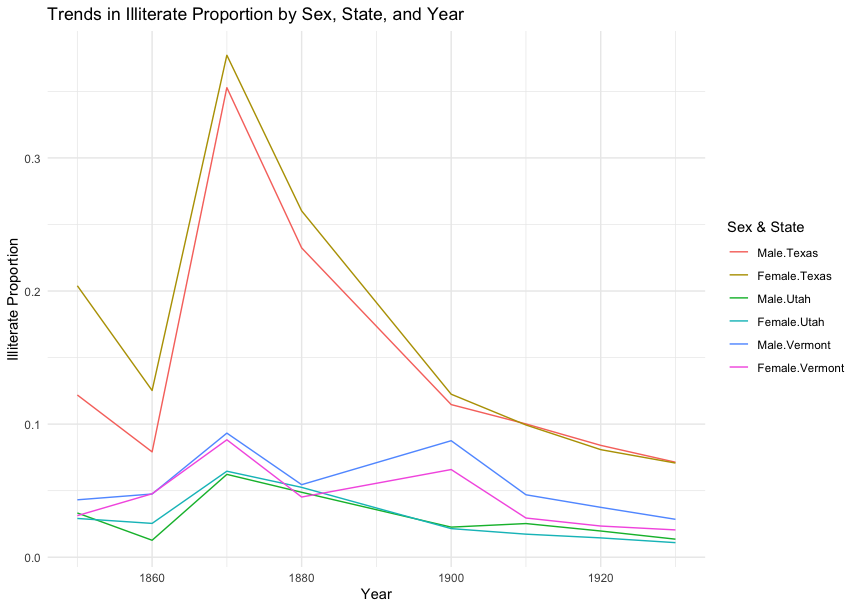
Back in the day, the census would record the literacy of respondents (in any language), so I used the IPUMS data (that I have used in several posts before) to access the complete censuses of pioneer Utah and look at literacy across time by gender. The complete US census data across all the years literacy was asked was big enough that it would have taken hours for my computer to crunch the numbers, so I selected Texas and Vermont (the two states on either side of Utah in terms of FIPS codes).The jump in illiteracy in 1870 is an artifact of… Read More
-
•
•
8 responses
In the scriptures, we find (among other things) stories we slip into in order to make sense of our lives. We are Adam and Eve, Joseph preparing for a famine, David facing Goliath, Alma the Younger looking back at his choices. We teach people to seek answers by earnestly praying like Joseph Smith in the Sacred Grove. I’ve never been the rich young man, but I’ve been a good Samaritan a time or two. And I was once Lehi, warned to take my family and flee. I mean that metaphorically, but not figuratively. Read More
-
•
•
2 responses
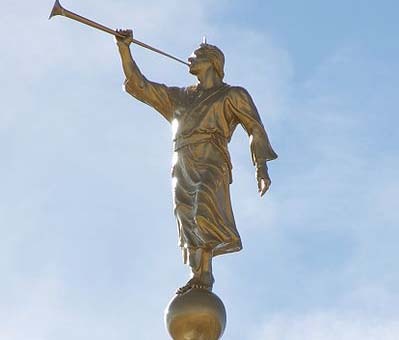
It was a monumental effort to create this version of the Book of Mormon. Read More
-
•
•
10 responses

Most of us have at some point checked our phone while driving. However, for a small minority of cases somebody walks in front of us and gets killed. We then (somewhat rightfully) blame the distracted driver for the death, even though most of us have inadvisedly checked our phone while driving, and it’s just the bad luck of being in the wrong place at the wrong time that led to it being much more serious than a peccadillo of checking our phone when we know we shouldn’t. This principle is known in philosophy as “moral luck.” We often blame people… Read More
-
•
•
2 responses
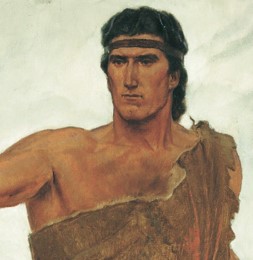
By Mike Winder When Nephi says he is “large in stature” does that mean he is merely “tall and muscular” or something else? Sometimes in the Bible stature means height, such as “a man of great stature” in 2 Samuel 21:20 speaking of the man born to the giant of Gath. Read More
-
•
•
34 responses
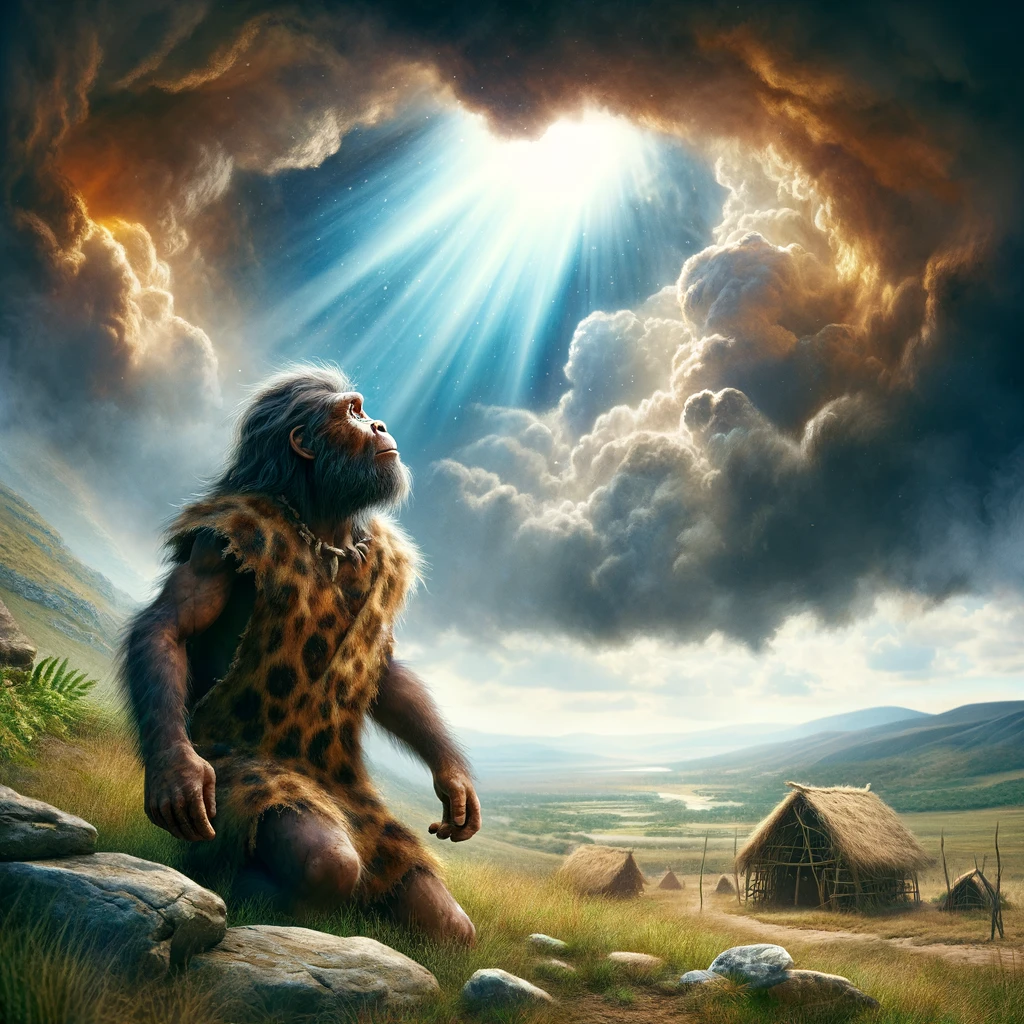
When it comes to human evolution or deep human history, there’s a sort of begrudging acceptance in Church culture of its possibility, or it’s used as some cudgel in a broader debate about biblical errancy or how symbolic Adam and Eve were, but very few have taken it any further and really sat down and thought through its theological implications and extensions on its own terms. The fact is that for much if not most of our time on earth we lived alongside, and had children with, entire other species that looked like us and could have also been religious… Read More
-
•
•
10 responses
One type of journalism I particularly enjoy not reading is the LDS-shaped hole in long-form articles about the agonies of American Christianity. Read More
-
•
•
14 responses

Where I actually am while writing this as a Boltzmann Brain When I was younger there was a chain of thought I had regarding my testimony that hinged on Bayesian logic (although I didn’t know the term at the time). Bayesian statistics and logic is a field that incorporates prior probabilities into current probabilities. For example, I heard (I don’t know if this is true) that most positive HIV tests are false positives, even though the false positive rate is low, say 5%. This is because, while the false positive rate is low, the chance that somebody actually has… Read More
-
•
•
14 responses
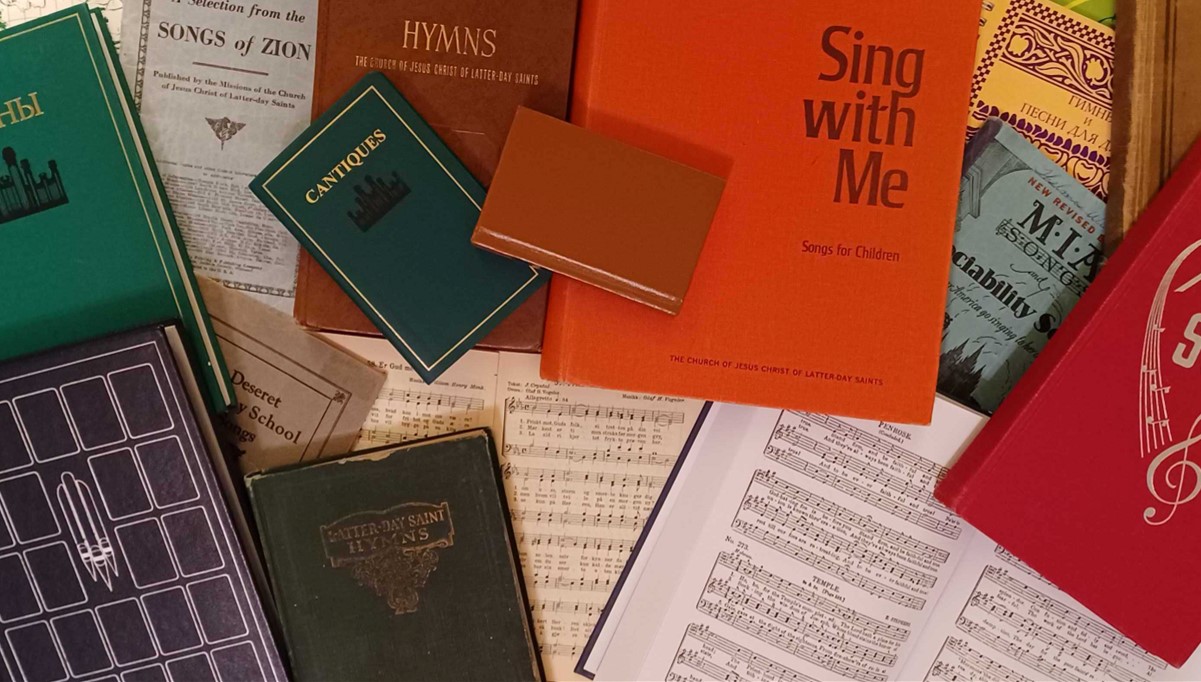
We’re getting closer to the new hymnbook/songbook being released. I talked about some updates last August, but there has been some other information that has come out since then. Read More
-
•
•
Martha Hughes Cannon was a notable, if complicated, woman in Utah history. Although somewhat forgotten (partly due to her son burning all her journals, at her request), she has become more widely remembered in recent years. In a recent interview at the Latter-day Saint history blog, From the Desk, biographer Constance L. Lieber shared some of her thoughts on this fascinating individual. What follows here is a co-post to the full interview. Read More
-
•
•
A Public Square Magazine article has been making the rounds about the history behind the Church being caught flat-footed in responding to probably the most influential piece of anti-Mormon literature of the 2010s. Not that people in the Church ecosystem didn’t have good responses, but at the time it hit, the traditional institution on whom such a response would normally fall (the Maxwell Institute) had recently shifted emphasis, leading to a lacuna, and responses fell on the back of volunteers who had families to feed and callings to fulfill, so they were predictably delayed and probably less developed than they… Read More
-
•
•
5 responses
Ehat, Stephen Kent. “Asymmetry in Chiasms, With a Note About Deuteronomy 8 and Alma 36.”Interpreter: A Journal of Latter-day Saint Faith and Scholarship,Volume 59 (2023) Read More
-
•
•
5 responses
[As I was going through my files, I found this draft that written four years ago. As it has about 24 hours of relevance left, I’m publishing it now. Happy New Year.] When I teach Revelation 1-11 to my youth Sunday School class, I’ll probably start off by saying something about gasoline. Read More
-
•
•
16 responses
In a long-ago post, John Fowles referred to a Book of Mormon couplet as the book’s thesis: Inasmuch as ye shall keep my commandments ye shall prosper in the land; but inasmuch as ye will not keep my commandments ye shall be cut off from my presence (2 Nephi 1:20) Read More
-
•
•
5 responses
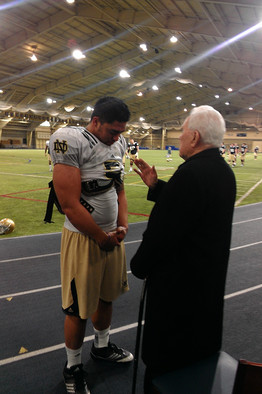
Catholic priest giving a blessing to Latter-day Saint/Notre Dame football player Manti Te’o (Source: Juvenile Instructor, who got it from the WSJ) The Catholic world has been abuzz about a recent directive from the Vatican condoning blessings (but not marriages, and not liturgical blessings, kind of) of same-sex couples. The document has engendered a lot of confusion, hair splitting, and myriad interpretations by people who are much more knowledgeable about Catholic thought than I, so I will refrain from claiming to know the One True interpretation of it, but a few high-level thoughts from a Latter-day Saint perspective. The African… Read More
-
•
•
5 responses

“Future of Mormonism” per Dalle-3 It’s common for pundits to make all sorts of predictions far enough in the future that people don’t really hold them accountable if they don’t pan out, so in the spirit of accountability I thought I would revisit some predictions I made last year for the Church in 2023 and see how well I did. The Church’s membership, on-the-books growth rate will be below 1% as reported in the April 2023 Conference. My probability: 80% WRONG The growth rate was 1.17%. I misjudged the impact of the post-COVID bump. There will be another scandal involving… Read More
-
•
•
18 responses

It has become popular in some circles to disparage Jesus the Christ by James E. Talmage because it’s too simplistic when it comes to its gospel harmonization approach, and the scholarship is very out of date. These things may be true, but it still holds up in ways that matter. Synthesizing the devotional with the intellectual can be difficult, and I do feel like a lot of the material in the Latter-day Saint market lands either on the side of being purely devotional or primarily intellectual with a patina of devotion. This isn’t surprising, as the latter are written… Read More
-
•
•
One response
In case it’s of use to anyone, I’ve prepared a list of my top 10 books that I’ve read this last year. (That can include books that were not published within the last year, though the majority of them were published in 2023 or 2022): Read More
-
•
•
One response

I have fond memories of Sunday evenings spent watching Voyager and Deep Space Nine with the family growing up. My wife’s home was more restrictive in regards to Sabbath day media, but that paradigm has been adopted by our own home as I’m gradually realizing the benefits of being more intentional and explicitly devotional for Sunday night movie night in terms of helping set the mood of the sabbath as the day dedicated to God. Lately we’ve been going through Touched by an Angel which is now free on Amazon Prime. TBAA can err on the side of being a… Read More
-
•
•
2 responses
When I played handbells as part of the music ministry of a local Presbyterian church, I was surprised to learn that in the traditional liturgical calendar, most of December isn’t Christmas time. Instead, it is a season called Advent that looks forward to Christmas time. Christmas itself begins on Christmas Eve and lasts through January 7. And by the same token, I learned that Advent has its own music tradition while playing in the bell choir. What has surprised me, however, is that some of those pieces of Advent music have found their way into Latter-day Saint hymnals over the… Read More
-
•
•
11 responses

“Democrat Mormon” per Dalle-3 “Republican Mormon” per Dalle-3 I’ve always had this hypothesis in the back of my mind that Latter-day Saints actually aren’t as politically red as we might think, and that some of our Republican-ism is an artifact of the fact that we live in Republican areas. If Latter-day Saints all lived in, say, Manhattan they’d be liberal, if they all lived in Alabama they’d be conservative. I finally got around to running the numbers, and it looks like no, we actually are just very Republican. **Wonk start** I used the 2022 Comprehensive Election Study data to test… Read More
-
•
•
5 responses
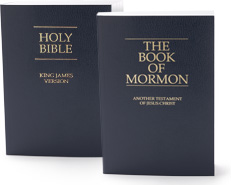
As Jonathan has been pointing out in his posts about Reading the Book of Mormon in wartime and Book of Mormon historical revisionism, we are only a few weeks out from starting the next year of the reading cycle. Come, Follow Me 2024, will focus on the Book of Mormon. We’ve had posts and discussions about what are some good resources in the past, such as the one David Evans put up about this time during the previous reading cycle that are worth looking over in preparation. But there are some good resources that are more recent that are worth… Read More
-
•
•
13 responses
As we study the Book of Mormon next year, there will be suggestions to read between the lines, to resist the surface or official or dominant reading, to see through the authoritative narrative to the unvarnished reality behind it – like the standard works, these suggestions too come around every four years. The instinct is understandable, as that’s how scholars are trained to read, and a lot of us have different varieties of scholarly training – but attempts at historical revisionism are misguided. Read More
-
•
•
40 responses

Dalle-3 depiction of “Legalistic religion” One of those interminable discussions we members like to get into is whether a particular teaching is a “doctrine” or “practice.” The issue behind the issue is what is changeable or not. Presumably if something is defined as core then stakes are placed in the ground and it is beyond discussion. At the same time if the “doctrine” label is used as conversation stopper for current teachings, the “practice” label is imputed to past teachings that did change, even if leaders at the time specifically said they wouldn’t change. At times it feels like it’s… Read More
